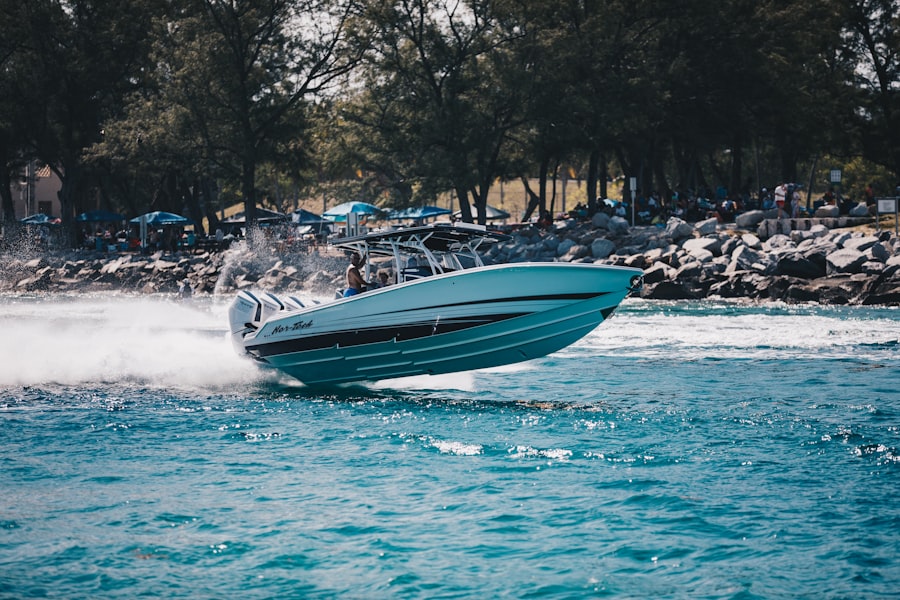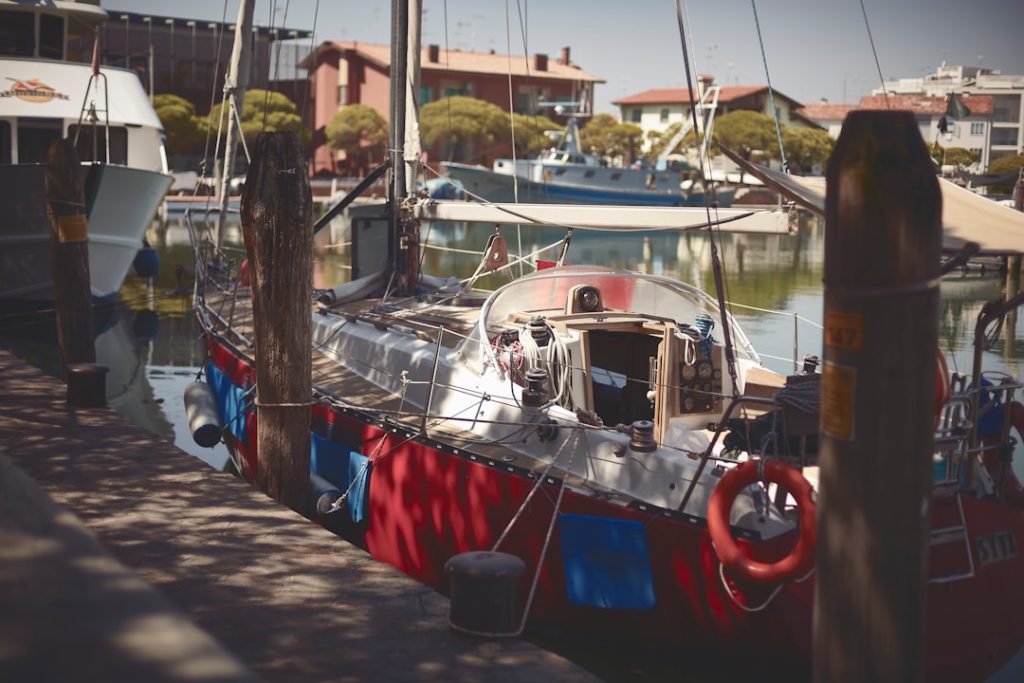The outboard motors market has witnessed significant evolution over the past few decades, driven by advancements in technology, changing consumer preferences, and a growing interest in recreational boating. Outboard motors, which are propulsion systems mounted externally on the transom of a boat, have become essential for various applications, including fishing, leisure cruising, and commercial maritime activities. The versatility and ease of use associated with outboard motors have made them a popular choice among boaters worldwide.
As the boating industry continues to expand, the demand for efficient, reliable, and powerful outboard motors has surged, prompting manufacturers to innovate and enhance their offerings. The global outboard motors market is characterized by a diverse range of products catering to different segments, from small portable engines for dinghies to high-powered motors for larger vessels. This diversity is reflective of the varied needs of consumers, ranging from casual boaters to professional fishermen.
The market is also influenced by regional factors, such as waterway accessibility, economic conditions, and cultural attitudes towards boating. As a result, understanding the dynamics of the outboard motors market requires a comprehensive analysis of these multifaceted elements.
Key Takeaways
- The outboard motors market is evolving with increasing demand driven by recreational boating and commercial use.
- Technological advancements, including electric and hybrid models, are shaping the future of outboard motors.
- Environmental sustainability is becoming a critical focus, influencing product development and regulatory policies.
- Key industry players are competing through innovation, strategic partnerships, and expanding global reach.
- Consumer preferences are shifting towards more efficient, eco-friendly, and user-friendly outboard motor options.
Current Trends in Outboard Motors
One of the most notable trends in the outboard motors market is the increasing shift towards four-stroke engines. Traditionally, two-stroke engines dominated the market due to their simplicity and lightweight design. However, four-stroke engines have gained popularity due to their fuel efficiency, lower emissions, and quieter operation.
This transition aligns with global efforts to reduce environmental impact and adhere to stricter regulations regarding emissions from marine engines. Manufacturers are responding to this trend by investing in research and development to enhance the performance and efficiency of four-stroke outboard motors. Another significant trend is the rise of electric outboard motors.
As environmental concerns become more pronounced and battery technology advances, electric propulsion systems are emerging as a viable alternative to traditional gasoline-powered engines. Electric outboards offer several advantages, including reduced noise pollution, zero emissions during operation, and lower maintenance costs. Companies like Torqeedo and Pure Watercraft are at the forefront of this trend, developing innovative electric outboard solutions that cater to eco-conscious consumers.
The growing acceptance of electric motors is indicative of a broader shift towards sustainability within the boating industry.
Growth Opportunities in the Outboard Motors Market

The outboard motors market presents numerous growth opportunities driven by various factors. One of the primary catalysts for growth is the increasing popularity of recreational boating activities. As more individuals seek outdoor experiences and leisure activities on the water, the demand for boats equipped with reliable outboard motors is expected to rise.
This trend is particularly evident in regions with abundant waterways and favorable climates, where boating serves as a popular pastime for families and adventure seekers alike. Additionally, emerging markets in Asia-Pacific and Latin America are poised to contribute significantly to the growth of the outboard motors market. Countries such as China and Brazil are experiencing rapid urbanization and rising disposable incomes, leading to increased interest in recreational boating.
As these markets develop their marine infrastructure and promote water-based tourism, manufacturers have an opportunity to tap into a burgeoning customer base. Strategic partnerships with local distributors and investments in marketing efforts tailored to these regions can further enhance market penetration.
Key Players and Competition in the Outboard Motors Industry
| Company | Market Share (%) | Annual Revenue (Billion) | Key Products | Competitive Advantage | Headquarters |
|---|---|---|---|---|---|
| Yamaha Motor Co., Ltd. | 30 | 15.2 | 2-stroke and 4-stroke outboard motors | Strong brand reputation, wide product range | Japan |
| BRP Inc. (Evinrude) | 15 | 4.5 | 4-stroke and direct injection 2-stroke motors | Innovative technology, fuel efficiency | Canada |
| Mercury Marine (Brunswick Corporation) | 28 | 12.8 | 4-stroke outboard motors, electric outboards | Strong dealer network, advanced engineering | USA |
| Honda Motor Co., Ltd. | 10 | 6.3 | 4-stroke outboard motors | Fuel efficiency, reliability | Japan |
| Suzuki Motor Corporation | 12 | 5.1 | 4-stroke outboard motors | Durability, competitive pricing | Japan |
| Tohatsu Corporation | 5 | 1.8 | Portable and mid-range outboard motors | Compact design, affordability | Japan |
The outboard motors industry is characterized by intense competition among several key players who dominate the market landscape. Major manufacturers such as Yamaha Motor Co., Honda Marine, Mercury Marine, and Suzuki Marine have established themselves as leaders through their commitment to innovation and quality. These companies invest heavily in research and development to create advanced outboard motor technologies that meet evolving consumer demands.
In addition to established players, new entrants are also making their mark in the industry by offering niche products or innovative solutions. For instance, companies focusing on electric propulsion systems are gaining traction as consumers increasingly prioritize sustainability. The competitive landscape is further complicated by factors such as pricing strategies, distribution channels, and customer service offerings.
As competition intensifies, companies must differentiate themselves through unique value propositions while maintaining high standards of performance and reliability.
Technological Advancements in Outboard Motors
Technological advancements have played a pivotal role in shaping the outboard motors market. Innovations in engine design, materials, and control systems have led to significant improvements in performance and efficiency. For example, advancements in fuel injection technology have enabled manufacturers to optimize fuel delivery, resulting in enhanced power output and reduced fuel consumption.
Additionally, lightweight materials such as aluminum and composite materials are increasingly being used in motor construction to improve overall performance while reducing weight. Moreover, digital technology has transformed how outboard motors are operated and maintained. Many modern outboards come equipped with sophisticated electronic control systems that allow for precise adjustments to engine performance based on real-time data.
Features such as GPS integration for navigation assistance and smartphone connectivity for monitoring engine diagnostics are becoming standard in new models. These technological enhancements not only improve user experience but also contribute to better fuel efficiency and lower emissions.
Environmental Impact and Sustainability in the Outboard Motors Market

As environmental concerns continue to gain prominence globally, the outboard motors market is under increasing pressure to adopt sustainable practices. Traditional gasoline-powered outboards contribute significantly to marine pollution through emissions and fuel spills. In response, regulatory bodies are implementing stricter emissions standards that manufacturers must comply with to remain competitive in the market.
This regulatory landscape has prompted many companies to invest in cleaner technologies and alternative fuel sources. Electric outboard motors represent a significant step towards sustainability within the industry. By eliminating emissions during operation, electric motors help protect marine ecosystems from pollution while providing a quieter boating experience.
Furthermore, manufacturers are exploring hybrid systems that combine traditional combustion engines with electric propulsion to offer consumers greater flexibility while reducing environmental impact. The shift towards sustainable practices not only addresses regulatory requirements but also aligns with consumer preferences for eco-friendly products.
Consumer Preferences and Demands in the Outboard Motors Market
Understanding consumer preferences is crucial for manufacturers aiming to succeed in the outboard motors market. Today’s consumers are increasingly informed and discerning when it comes to their purchasing decisions. Factors such as fuel efficiency, reliability, ease of maintenance, and environmental impact play a significant role in shaping consumer choices.
As a result, manufacturers must prioritize these attributes when designing their products. Additionally, there is a growing demand for customization options among consumers who wish to tailor their boating experience to their specific needs. This trend has led manufacturers to offer a range of accessories and features that allow boaters to personalize their vessels according to their preferences.
From advanced navigation systems to enhanced seating arrangements, customization options can significantly influence purchasing decisions and enhance customer satisfaction.
Future Outlook for the Outboard Motors Industry
The future outlook for the outboard motors industry appears promising as it adapts to changing consumer demands and technological advancements. The ongoing transition towards electric propulsion systems is likely to accelerate as battery technology continues to improve, making electric outboards more accessible and practical for a broader audience. Additionally, as environmental regulations become more stringent worldwide, manufacturers will need to innovate continuously to meet compliance standards while delivering high-performance products.
Furthermore, the expansion of recreational boating activities globally presents an opportunity for sustained growth within the market. As more individuals seek outdoor experiences on the water, the demand for reliable outboard motors will continue to rise. Manufacturers that can effectively leverage technological advancements while addressing consumer preferences will be well-positioned to thrive in this dynamic landscape.
The interplay between innovation, sustainability, and consumer engagement will ultimately shape the trajectory of the outboard motors industry in the years ahead.


